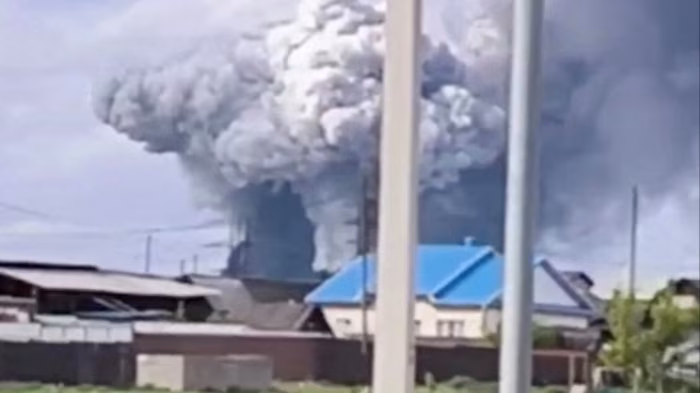Ukraine mounted its deepest strike of the war overnight, sending swarms of long-range drones hundreds of miles into Russia and claiming the destruction of at least 41 combat aircraft at four separate bases, only hours before a new round of ceasefire negotiations opened in Istanbul.
Four bases, one night
Security officials in Kyiv said the coordinated attack hit Belaya in Irkutsk oblast, Olenya on the Kola Peninsula, Shaykovka in Kaluga and the Engels strategic-bomber hub in Saratov, crippling Tu-95 and Tu-160 nuclear-capable bombers as well as Su-34 strike jets. Footage posted by Ukraine’s military intelligence directorate showed secondary explosions rippling across parking aprons; satellite images released by Planet Labs later on Sunday appeared to confirm at least a dozen charred airframes at Engels and Belaya.
Russia’s defence ministry acknowledged attacks on “several airfields” but insisted that most of the 62 inbound drones were shot down and damage was “insignificant.” Russian bloggers, however, posted photographs of blasted revetments and scorched Tu-22M3 bombers at Shaykovka before the images were swiftly removed.
Missile salvos over Ukraine
Within hours, Russia retaliated with its largest daylight strike in three months, firing more than 70 cruise and ballistic missiles plus 120 Shahed-type drones at energy facilities in Kyiv, Odesa and Dnipro, according to Ukraine’s air force. Explosions rocked at least six regional electricity substations; two civilians were killed in Kharkiv and a further 27 were injured nationwide, emergency services said.
Diplomatic whiplash in Istanbul
The escalation set a grim backdrop for Turkish-brokered peace talks that resumed Sunday at Istanbul’s Dolmabahçe Palace. Ukrainian Defence Minister Rustem Umerov arrived from Ankara saying the night’s operation showed “Moscow’s rear is no longer untouchable” but insisted Kyiv still sought “a just peace.” Russian Deputy Foreign Minister Sergei Ryabkov accused Ukraine of “sabotaging the process before it even begins.”
Negotiators are working from a U.S.–Turkey framework that would trade a phased Russian withdrawal for internationally supervised referendums in occupied areas. Ukraine’s draft rejects any vote held “under foreign gun barrels” and demands war-crime tribunals and reparations.
Putin doubles down
Speaking in Moscow after the retaliatory strikes, President Vladimir Putin restated preconditions that have stymied previous rounds. “There will be no ceasefire unless Ukrainian forces leave Donetsk, Luhansk, Zaporizhzhia and Kherson,” he said, adding that Kyiv must “abandon any ambition” of NATO membership. Ukrainian President Volodymyr Zelenskyy dismissed the demand as “imperial blackmail” in a post on X.
Why the airfields matter
Military analysts say the targeted bases house aircraft used to launch Kh-101 cruise missiles that routinely hit Ukrainian cities. Destroying—or even grounding—those bombers could reduce Russia’s long-range strike capacity in the critical summer months.
“If even half of Kyiv’s claim is accurate, Russia just lost a year’s worth of bomber production in one night,” said Konrad Muzyka of Rochan Consulting. “It also shows Ukrainian drones can now navigate 2,000 km and still find a revetment.”
Western response
A U.S. State Department spokesperson said Washington “neither selected the targets nor provided the specific strike capability,” but reiterated Ukraine’s right to self-defence. NATO Secretary-General Jens Stoltenberg called the episode “a powerful reminder that Russia’s aggression has consequences at home.”
Outlook
As negotiators huddle in Istanbul, both armies appear to be signalling they can still escalate. Ukraine’s drones demonstrated unprecedented reach; Russia’s missiles reminded Kyiv of its vulnerability. Whether the show of force will harden positions or jolt the parties toward compromise could become clear within days—if the talks survive that long. For now, Istanbul’s chandeliers hang over the most volatile moment in the war since its full-scale eruption more than three years ago.
